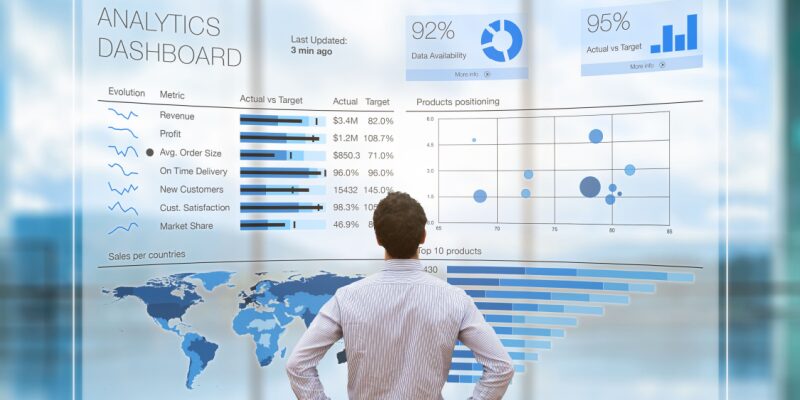Businesses today generate vast amounts of data on a daily basis. This data can hold valuable insights that can drive strategic decisions, improve processes, and enhance overall performance. However, making sense of this data can be challenging without effective visualization tools. This is where Power BI comes into play.
What is Power BI?Power BI is a powerful business analytics tool developed by Microsoft. It enables businesses to connect to various data sources, transform raw data into meaningful insights, and create interactive and visually appealing reports and dashboards. Whether you're dealing with sales figures, customer behavior, financial data, or any other type of business information, Power BI can help you gain deeper insights and make informed decisions.
Getting StartedIf you're new to Power BI, here are the basic steps to get started:
- Connect to Data Sources: Power BI allows you to connect to a wide range of data sources, including databases, spreadsheets, cloud services, and more. Import your data into Power BI to begin the visualization process.
- Data Transformation: Raw data is rarely ready for visualization. Power BI provides tools to clean, reshape, and transform your data into a usable format. This might involve removing duplicates, handling missing values, and performing calculations.
- Create Visualizations: This is where the magic happens. Power BI offers a variety of visualization options such as charts, graphs, maps, tables, and more. Choose the appropriate visualization type that best represents your data's story.
- Design Reports and Dashboards: Arrange your visualizations on reports and dashboards. Reports can contain multiple pages, each with a different focus. Dashboards provide a high-level overview and allow you to pin important visualizations for quick insights.
- Interactivity: Power BI reports and dashboards are interactive. Users can filter, drill down, and explore the data on their own. This enables users to uncover specific insights relevant to their needs.
To make the most of Power BI's capabilities, keep these best practices in mind:
- Know Your Audience: Tailor your visualizations to your target audience. What insights are most relevant to them? What level of detail do they need?
- Use Appropriate Visualizations: Choose the right chart or graph for your data. Bar charts for comparisons, line charts for trends, pie charts for proportions, and so on.
- Keep it Simple: Avoid clutter and excessive details. A clean and simple design makes it easier for users to grasp the information.
- Use Colors Wisely: Colors can enhance understanding, but they can also confuse if overused. Stick to a consistent color palette and use color meaningfully.
- Provide Context: Add titles, labels, and explanations to your visualizations to provide context and help users understand the significance of the data.
Power BI allows you to share your reports and dashboards with colleagues and stakeholders. You can publish your visuals to the Power BI service, where others can view and interact with them. This facilitates collaboration and ensures that everyone is on the same page when it comes to data-driven decisions.
Power BI is a game-changer for businesses looking to leverage their data for informed decision-making. With its user-friendly interface, powerful visualization tools, and seamless sharing capabilities, Power BI empowers users to transform raw data into actionable insights. By following best practices and exploring its features, you can unlock the full potential of your business data and drive success.
So, whether you're a small startup or a large enterprise, consider integrating Power BI into your data strategy and start visualizing your way to better business outcomes.






